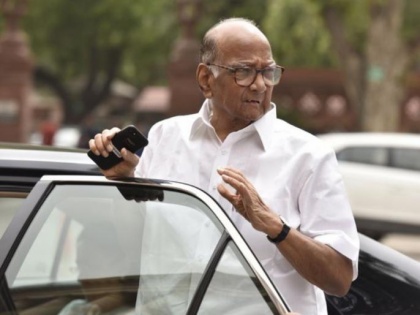'My Strategy Was Not Accepted': Sharad Pawar Explains Why MVA's Jayant Patil Lost MLC Election
By Lokmat English Desk | Updated: July 17, 2024 14:20 IST2024-07-17T14:19:36+5:302024-07-17T14:20:43+5:30
Last week, the results of the Legislative Council elections were announced. Out of 12 candidates for 11 seats, all ...

'My Strategy Was Not Accepted': Sharad Pawar Explains Why MVA's Jayant Patil Lost MLC Election
Last week, the results of the Legislative Council elections were announced. Out of 12 candidates for 11 seats, all nine candidates from the Maha Yuti alliance were elected. The Mahavikas Aghadi (MVA) had three candidates, but Jayant Patil from the Peasants and Workers Party (PWP), aligned with MVA, lost. Speculation about internal betrayal within MVA has been rife. Sharad Pawar has now provided an explanation for Patil’s defeat.
“There was no collective decision regarding Jayant Patil. The Congress, NCP, and Thackeray group did not decide on candidates together. My party had 12 votes. We felt it was necessary to support Shetkari Kamgar Party due to our previous collaboration,” said Sharad Pawar.
“In the Lok Sabha elections, we three parties contested together, including CPI, CPM, and Shetkari Kamgar Party, who had requested seats from us. We weren’t in a position to offer seats then but promised support in the Legislative Council and Assembly elections. This was agreed upon, leading to our success in the Lok Sabha. The intention was to reconsider this support when the opportunity arose,” Pawar explained.
“Congress had the most votes and nominated their candidates accordingly. Shiv Sena had fewer votes but nominated their candidate as well. There were differences in strategy. Congress had 37 votes, we had 12, and Shiv Sena had 16. The idea was for Congress to take all the votes needed to secure their candidates. Half of the second-preference votes were to go to Shetkari Kamgar Party and Thackeray’s group. If the first-preference votes transferred, sufficient votes would reach the second preference. Thackeray’s group would give their second-preference votes to Shetkari Kamgar Party,” Pawar continued.
“This strategy was not accepted, resulting in Patil’s defeat. Nobody deceived anyone; it was purely a strategic failure,” concluded Sharad Pawar.
Open in app